






▼Click each molecule for an explanation!
Singlet Fission
One exciton can split into two through the process of fission. Doubling the number of excitons could double the output current of solar cells and improve efficiency. New materials and a deeper understanding of the process are needed to fully utilize fission.
![]()
Lasing
One exciton can trigger other excitons to emit light with the exact same properties. This process is the basis for creating organic lasers that could make lasers widely available. Many challenges still remain to meet the stringent requirements for lasing.
![]()
Light Emission
A molecule can gain extra energy in the form of an exciton when a positive (electron) and negative (hole) charge meet. The exciton can release this energy by emitting light. This emission can be used for displays, lighting, sensors, and more.
![]()
Power Generation
Excitons can also be created by absorbing energy from light. By then separating the positive and negative charges in the exciton, electricity can be generated. Organic materials are a path to flexible, lightweight, and low-cost solar cells.
![]()
Circularly-Polarized Luminescence
Through appropriate molecular design, light with a rotating electric field, called circularly polarized, can be emitted. This kind of emission can be useful for new types of displays, optical storage systems, sensors, and more.
![]()
Long Lifetime
By suppressing the processes that destroy excitons, energy can be stored in excitons for longer periods of time before being released. These processes of storage and delayed release are under investigation for new applications.
![]()
We are hard at work studying relationships between molecular structure and physical properties, creating new materials, and developing new device structures to exploit excitons and establish the next generation of electronics based on organic materials.



To further the fundamental understanding of excitons and fully harness them, the ADACHI Molecular Exciton Engineering Project was founded under the Exploratory Research for Advanced Technology (ERATO) program of the Japan Science and Technology Agency (JST) in 2013 and will run until March 2019. This project is exploring novel molecular excitonic processes in organic thin films and pioneering their related basic photophysics, device physics, and materials science. We aim to engineer and control undeveloped excitonic processes and design novel materials and optoelectronic devices with new functionalities. Through this, we will create both high-performance devices and new, innovative devices that will unlock additional applications, with one major goal of achieving organic semiconductor lasers. These advances are expected to contribute to organic electronics helping to shape the future of society.

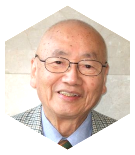
Katsumi Tokumaru
University of Tsukuba
(Professor Emeritus)

Tetsuo Tsutsui
Kyushu University
(Professor Emeritus)

Hiroyuki Sasabe
Chitose Institute of Science and Technology
(Professor Emeritus)

Masahiro Kotani
Gakushuin University
(Professor Emeritus)
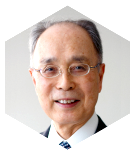
Kenichi
Iga
Tokyo Institute of Technology
(Professor Emeritus)
New molecules and a deeper understanding of their structure-function relationships are vital to unravel the nature of excitons and fully harness them. This group is designing new applications-focused molecules and using their obtained properties to guide future molecular design, clarify structure-function relationships, and ultimately develop optimal materials for innovative applications.
Aiming to maximize light emission from exciton decay, this group is focusing on new light-emission mechanisms and device structures and developing processing methods for manipulating exciton dynamics and properties such as by controlling molecular orientation. These new processes and techniques will be further developed for application to practical devices.
In addition to the individual materials, excitonic processes are also greatly affected by device architecture and material combinations. In this research, we are exploring organic materials in various solid, liquid, and crystalline states to control and harness excitons for high-performance OLEDs, solar cells, transistors, thermoelectric generators, and more.
Exceptional structures and functionality along with important exciton-based reactions can be found throughout biological systems. Through the fusion of biochemistry and organic optoelectronic device chemistry, this group is developing new devices insipired by biological processes and structures and exploring new materials for bio-compatible electronics.
The facilities at OPERA house a wide variety of equipment for the creation and characterization of new materials, films, and devices including fully-equipped synthesis labs for over 30 people, NMR, TG-DTA, multiple vacuum train sublimation systems, over nine vacuum deposition systems connected to gloveboxes, an e-beam lithography system, optical labs, an XRD system, UV-Vis-NIR spectrophotometer, photoluminescence spectrometer, PLQY measurement system, streak camera, and OLED, OPV, and OTFT measurement systems.
The ADACHI Molecular Exciton Engineering Project is based at the Center for Organic Photonics and Electronics Research (OPERA) at Kyushu University, Ito Campus, in Fukuoka, Japan. The center was established in 2010 to create new advances in organic electronics and will continue that goal through this project. Collaborative investigators include research groups from other departments at Kyushu University and groups at other universities including Kyoto University and Waseda University.
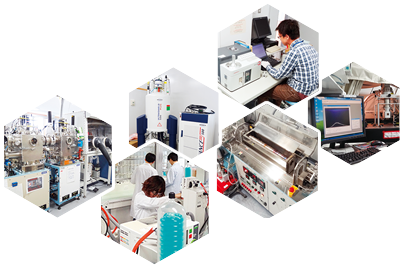
An exciton is an energetic state in semiconductors that can be thought of as a bound negative (electron) and positive (hole) charge. Excitons directly affect the electrical and optical properties and behavior of devices and films that use organic materials as semiconductors. The engineering and controlling of processes related to excitons is key to fully unlocking the potential of organic semiconductors and optoelectronics. With the possibility for flexible, lightweight, and low-cost devices and uses ranging from displays and lasers to power generation and transistors, the next generation of organic electronics will play a growing role in everyday life.
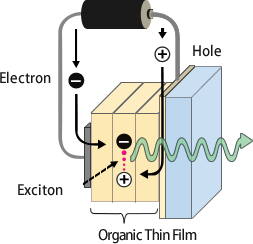

Chihaya Adachi
Research Director
[Research interests]
Organic optoelectronics,
organic semiconductor device
properties, organic photo-
physics and photochemistry

Hajime Nakanotani
Project Coordinator
[Research interests]
Organic single-crystal-based
devices, OLEDs, OTFTs

Ryota Kabe
(Assistant Professor)
Molecular Design and Synthesis Group Leader
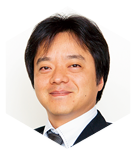
Toshinori Matsushima
(Associate Professor)
Device-Oriented Breakthrough Group Leader

Kenichi Goushi
(Assistant Professor)
Unique Physical Processes Group Leader

Youichi Tsuchiya
(Associate Professor)
Bio-Compatible Electronics Group Leader